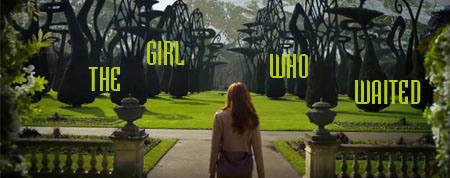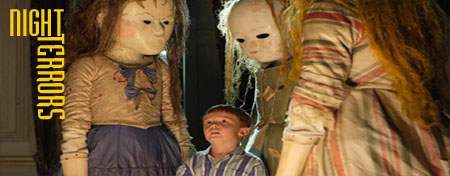Spec Savers
Friday, September 30th, 2011
First up, let’s give credit where credit is due. Yes, Neil Gorton’s subtle make-up job was a revelation, the robots were fun, the Tim Burton trees were great and Rory cries, but Karen Gillan owns this episode like no other companion ever has before.
Her exquisite performance as the 57-year-old Amy is the heart and soul of this story – as writer Tom McRae says, Gillan could have performed with marker pen lines on her face, and you’d still have believed it. Every gesture and look conveys betrayed trust and repressed hurt, a once irrepressible young woman now deeply withdrawn and protectively armoured, physically and emotionally. All this and pitching a very difficult age to play, perfectly. A mere seven years older than my own lovely wife, Amy hasn’t become old by any means – just experienced, embittered and toughened by a hard and lonely life forced upon her by a series of stupid mistakes.
Watch again for older Amy’s involuntary reaction to Rory’s fez quip; its entirely convincing that she hasn’t laughed in 36 years, or her surly suspicion when accepting the glasses from him. The weight and sense of wounded dignity to her performance utterly belie Gillan’s true age. And yet, in both guises, she even manages to make the macarena scene work (in Russell T Davies’ time, the song itself would no doubt have blasted over the top of this delicate sequence.)
And speaking of curious hand movements, the handbots were also well executed. At last one of George Lucas’s thankfully unused concepts – having Threepio see through his fingers – is realised. Amy’s ‘Wilson-esque’ pet, an acquired handbot whom she’s named Rory, is a lovely addition. The crude face she’s drawn on him has a smiling mouth, but upturned brows which make him look sad and apologetic – which is perfectly apt.
The scenario created here could never end painlessly, and the Doctor’s choice of resolution is heart-rending. I find it impossible to imagine any other Doctor playing this scene, but perhaps they were just lucky enough never to have to face a dilemma like this one. It’s a situation which provokes thought long afterwards – young Amy is our Amy, but her older self has just as much right to her life. Strong stuff – and quite right too.
The Girl Who Waited isn’t an exciting episode, but will, I hope, form the perfect farewell to Rory and Amy’s tenure on board the TARDIS. Perhaps not chronologically; but after a gift like this, there is surely nowhere else for these characters to go – and nothing else the Doctor can do to them. I think I can sense change in the air, and perhaps it’s about time.
AH


